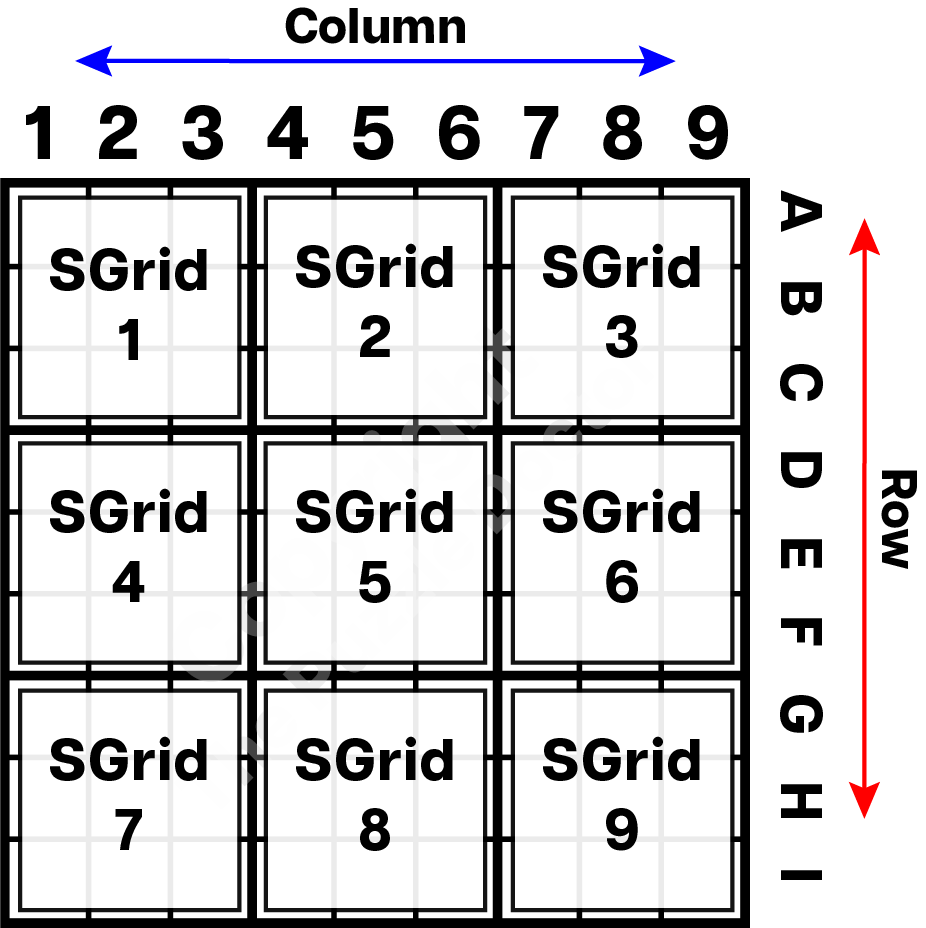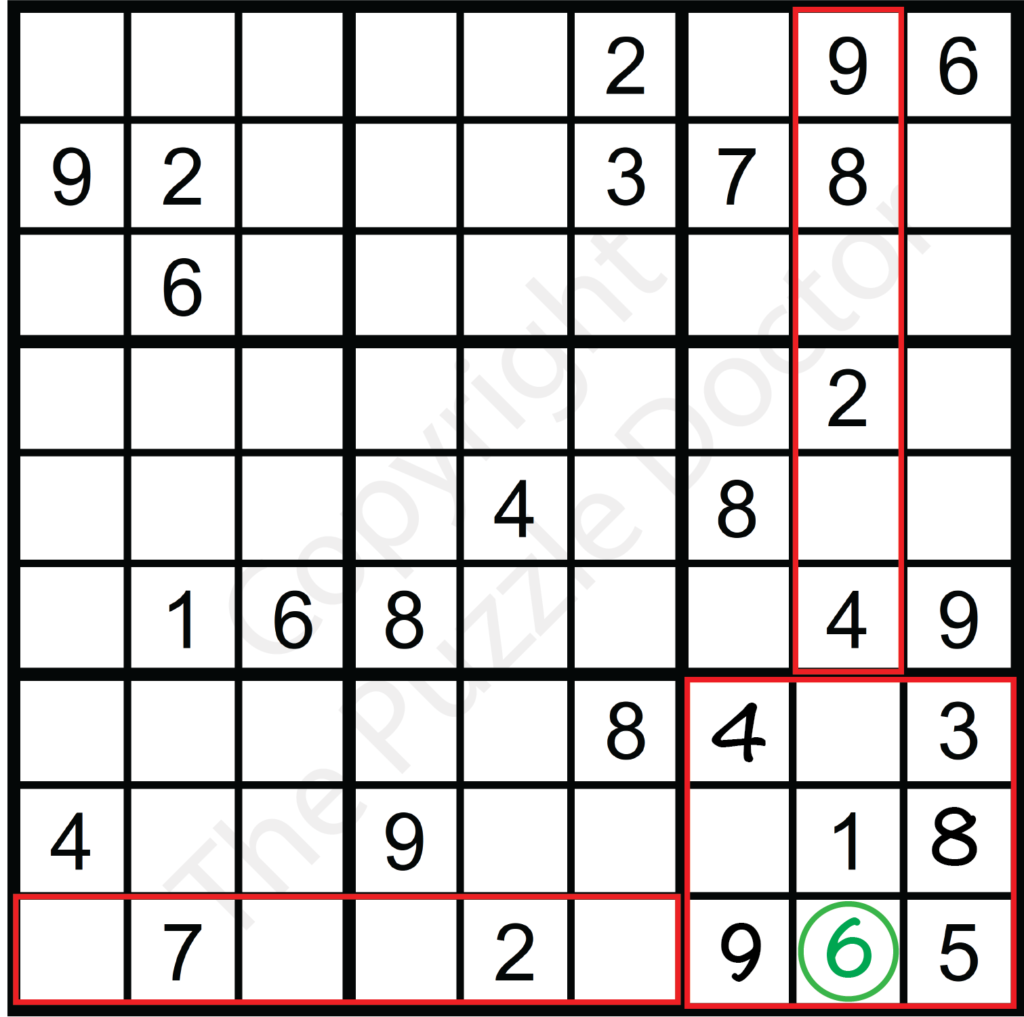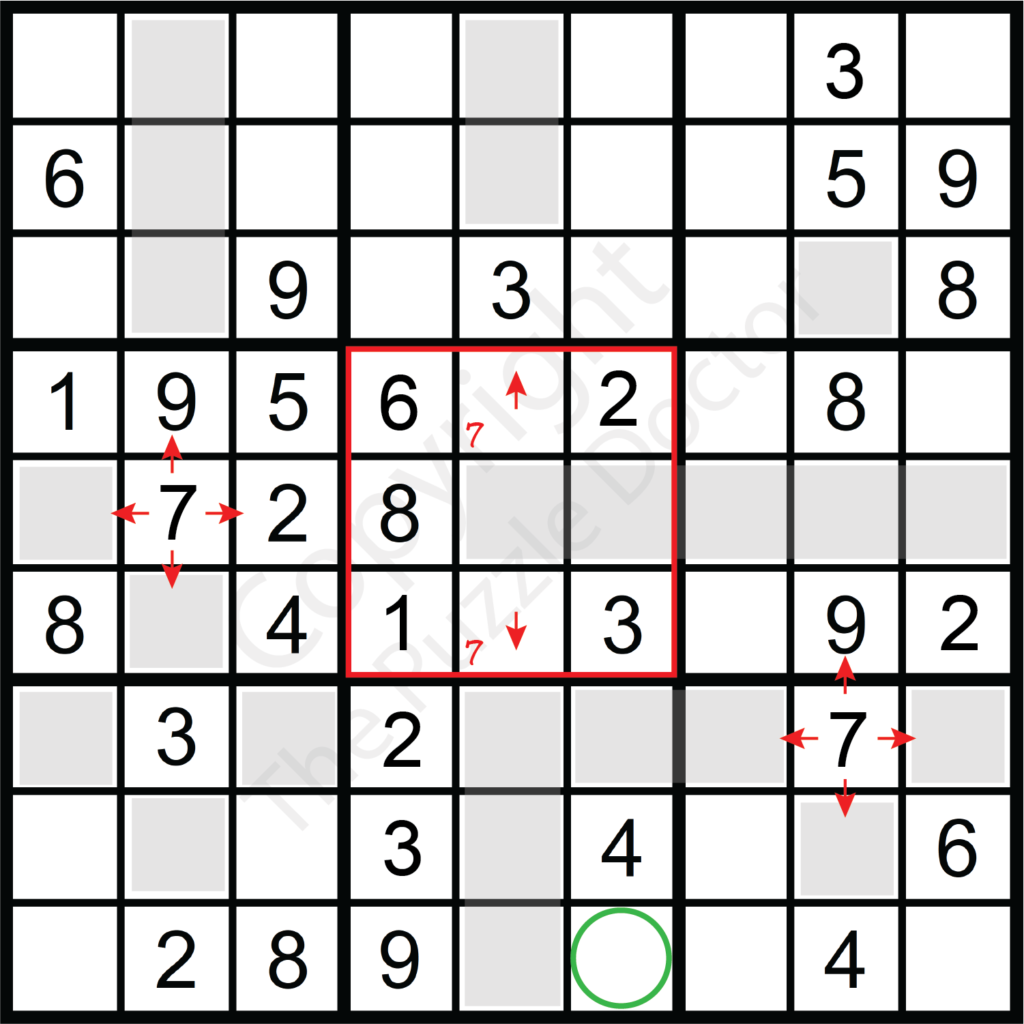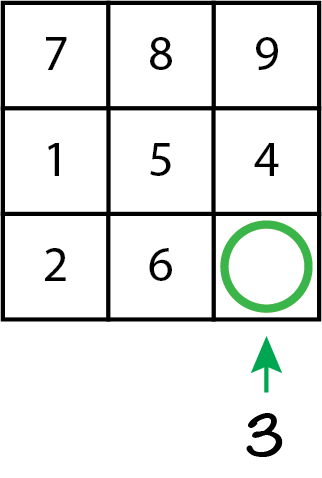How to Play Sudoku
Mastering Sudoku is about embracing a few simple strategies that pave the way for progressing through each puzzle using logic and deduction skills.
For the simple techniques described on this page and elsewhere, we’ll refer to parts of the grid and sub-grids as in the following diagram:

Solving Sudoku with Simple Techniques
Regardless of difficulty level, each Sudoku puzzle begins with several given numbers. Easier puzzles typically start with more than difficult Sudoku puzzles, but there could be several factors that influence the number of givens. It all depends on the algorithm used in creating the Sudoku puzzle. Begin by examining the pre-filled numbers to understand the layout of the puzzle, then start identifying the numbers that are missing. I usually start with looking at how frequent certain numbers appear or if there are rows, columns, or grids with only 1 or 2 missing numbers.
Start with the Obvious
- If there is only 1 remaining number in a sub-grid, row, or column – fill it in

Basic Scanning Techniques
Cross-Hatching
- Start with identifying a number that occurs frequently
- Scan across the rows and down columns drawing imaginary lines or blocks where the number cannot occur
- See if you can identify if there is only one place it can go within a 3×3 SGrid.

In the example above, I’ve chosen the number 4. After scanning rows and columns, in SGrid 7, with possible cells being grayed out where the number 4 cannot be placed, only one spot for the number 4 remains.I fill this in. I then move to another number that occurs frequently such as the number 9. Following the same technique, I make notations where the number 9 can go and identify another spot in SGrid 7 where only the number 9 can be placed:

The Process of Elimination
- Using the results of your scanning, eliminate impossible candidates in the remaining cells.
- If a number already exists in a row, column, or block, it cannot appear again within those sections.
After filling in a couple more numbers by scanning rows and columns, I like to start eliminating more possibilities. Making notations early will help with this. Continuing to work with the number 9, I look at the notations I made during scanning and see if I can eliminate one of the notations. After having placed the number 9 in SGrid 7, I can eliminate the number 9 in SGrid 9, row H as it violates the rule of not having two of the same number in the same row. This then leaves only 1 spot for the number 9 in SGrid 9. The number 9 is almost completed in the entire puzzle with only 2 sub-grids remaining to complete.

Scanning and elimination techniques are critical techniques that will help you solve Sudoku puzzles. They are used together with other techniques to solve Sudoku puzzles from easy to hard.
Scan and Count
- Scan the rows, columns, and sub-grids for one that has very few numbers remaining to be placed.
- Count from 1 to 9 in each row, column, and block to see what’s missing.
- Fill in the numbers missing or make notations if numbers cannot yet be placed
Scanning and counting is a very basic technique that is very useful at all levels of difficulty when playing Sudoku. Let’s revisit our nearly completed grid and take at look at sub-grid 4, where only two numbers are missing. Applying the counting method, we find that 6 and 7 are the missing digits. The method is straightforward: simply identify which numbers have not yet been used.
At times, this approach can swiftly lead to placing numbers accurately. However, for our current example puzzle, there’s still the task of determining the precise placement within the sub-grid. This is where scanning and the process of elimination come into play. In this scenario, the placement of 6 and 7 hinges on their positions in other parts of the grid. However, while we may not be able to identify exactly where in SGrid 4 the number 6 or 7 go, the strategy helped eliminate these numbers from column 2 in SGrid 1 and 7 and will help us as we continue to complete the puzzle.

Single Candidate Technique
With the single candidate, you look in the sub-grid, the column, and the row of the cell you are trying to fill to see if there is a single candidate. Take the example below. A basic scanning technique was used to place the number 4 and the number 9 in SGrid 9. Next, I want to see if there is a single candidate for any of the remaining cells and I start with row I, column 8. First, we can eliminate the numbers in the SGrids: 1, 3, 4, 5, 8, and 9. Then looking up the column, we can eliminate 2. Then looking across the row, we can eliminate the number 7. At this point, we have eliminated 1, 2, 3, 4, 5, 7, 8, 9 which leaves only the number 6 to fill that position.

While in most cases you can be confident about filling in the number, be sure to double check that the number does not conflict with any others in the same row, column, or sub-grid. This can happen especially if you made a mistake elsewhere and also sometimes if you are depending on notations.
Advanced Elimination Technique
When trying to place numbers, it is important to look across the entire grid for possible candidates to eliminate. You’ll want to look at the sub-grids, columns and rows. As the puzzles get more complex, you may need to look at multiple rows, columns, and sub-grids to make decisions.
Consider the illustrated scenario when attempting to place the number 7 in SGrid 5. Because of where the number 7 in SGrid 4 is placed row E is eliminated in SGrid 5. This results in two possible cells to place the number 7 in that sub-grid, both in column 5. The number 7 is can then be eliminated from placement in column 5 across SGrid 2 and 8. In sub-grid 8, only two possible positions for 7 remain. However, by scanning to possibly eliminate one of the two cells, column 6, row G can be eliminated and 7 confidently placed in column 6 row I. In this example looking at several sub-grids as well as columns and rows was necessary to eliminate possibilities.

Common Mistakes to Avoid as a Beginner
- Resist the urge to guess; there’s always a logical solution.
- Verify each number’s placement by checking its row, column, and block.
- Balance your focus across the entire grid, not just on one section.
